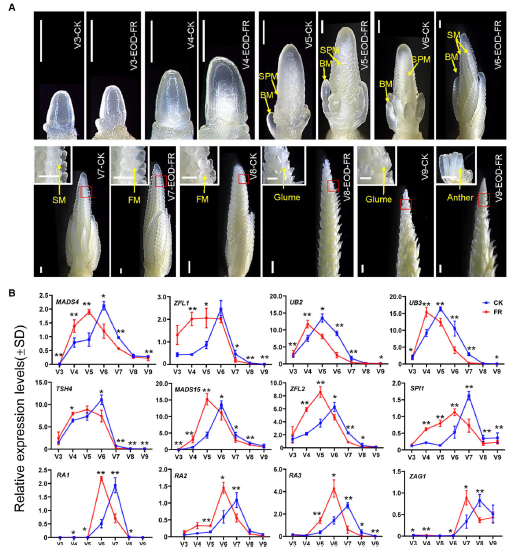Abstract:
Increasing planting density has been adopted as an effective means to increasemaize (Zeamays) yield. Competition for light from neighbors can trigger plant shade avoidance syndrome,which includes accelerated flowering. However, the regulatory networks of
maize inflorescence development in response to high-density planting remain poorly understood. In this study, we showed that shade-mimicking treatments cause precocious development of the tassels and ears. Comparative transcriptome profiling analyses
revealed the enrichment of phytohormone-related genes and transcriptional regulators among the genes co-regulated by developmental progression and simulated shade. Network analysis showed that three homologous Squamosa promoter binding protein
(SBP)-like (SPL) transcription factors, Unbranched2 (UB2), Unbranched3 (UB3), and Tasselsheath4 (TSH4), individually exhibited connectivity to over 2,400 genes across the V3-to-V9 stages of tassel development. In addition, we showed that the ub2 ub3 double mutant and tsh4 single mutant were almost insensitive to simulated shade treatments. Moreover, we demonstrated that UB2/UB3/TSH4 could directly regulate the expression of Barren inflorescence2 (BIF2) and Zea mays teosinte branched1/cycloidea/proliferating cell factor30 (ZmTCP30). Furthermore, we functionally verified a role of ZmTCP30 in regulating tassel branching and ear development. Our results reveal a UB2/UB3/TSH4-anchored transcriptional regulatory network ofmaize inflorescence development and provide valuable targets for breeding shade-tolerant maize cultivars.



